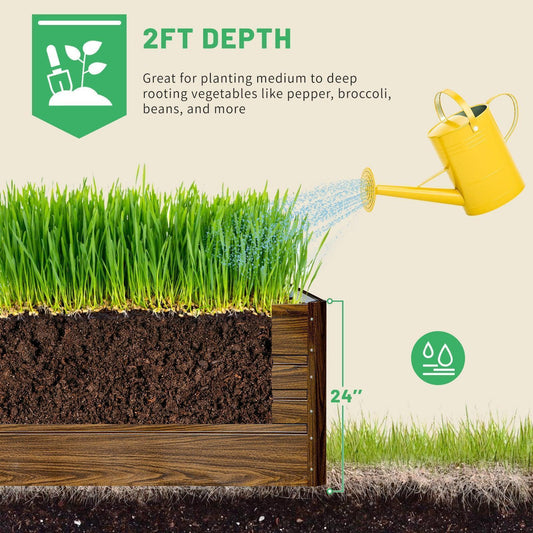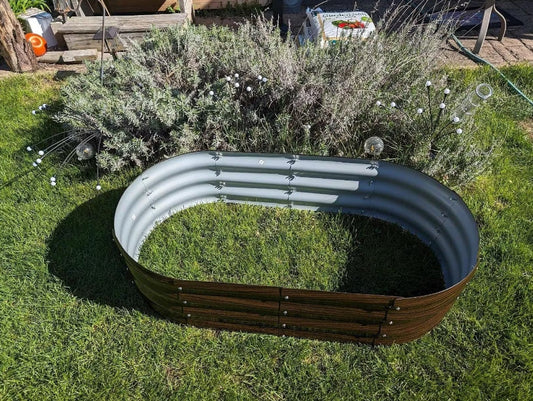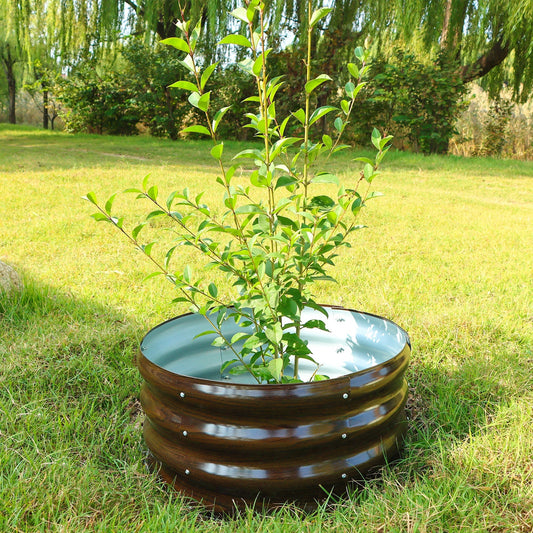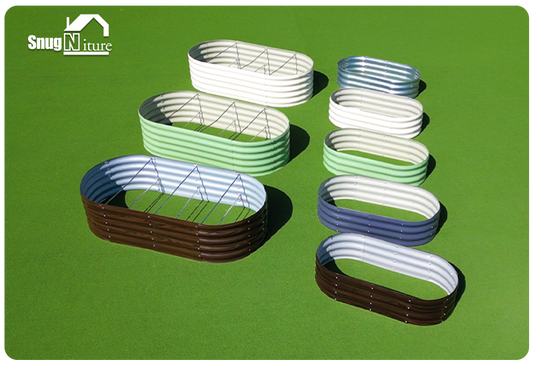Unlocking the Secrets of Successful Raised Garden Beds
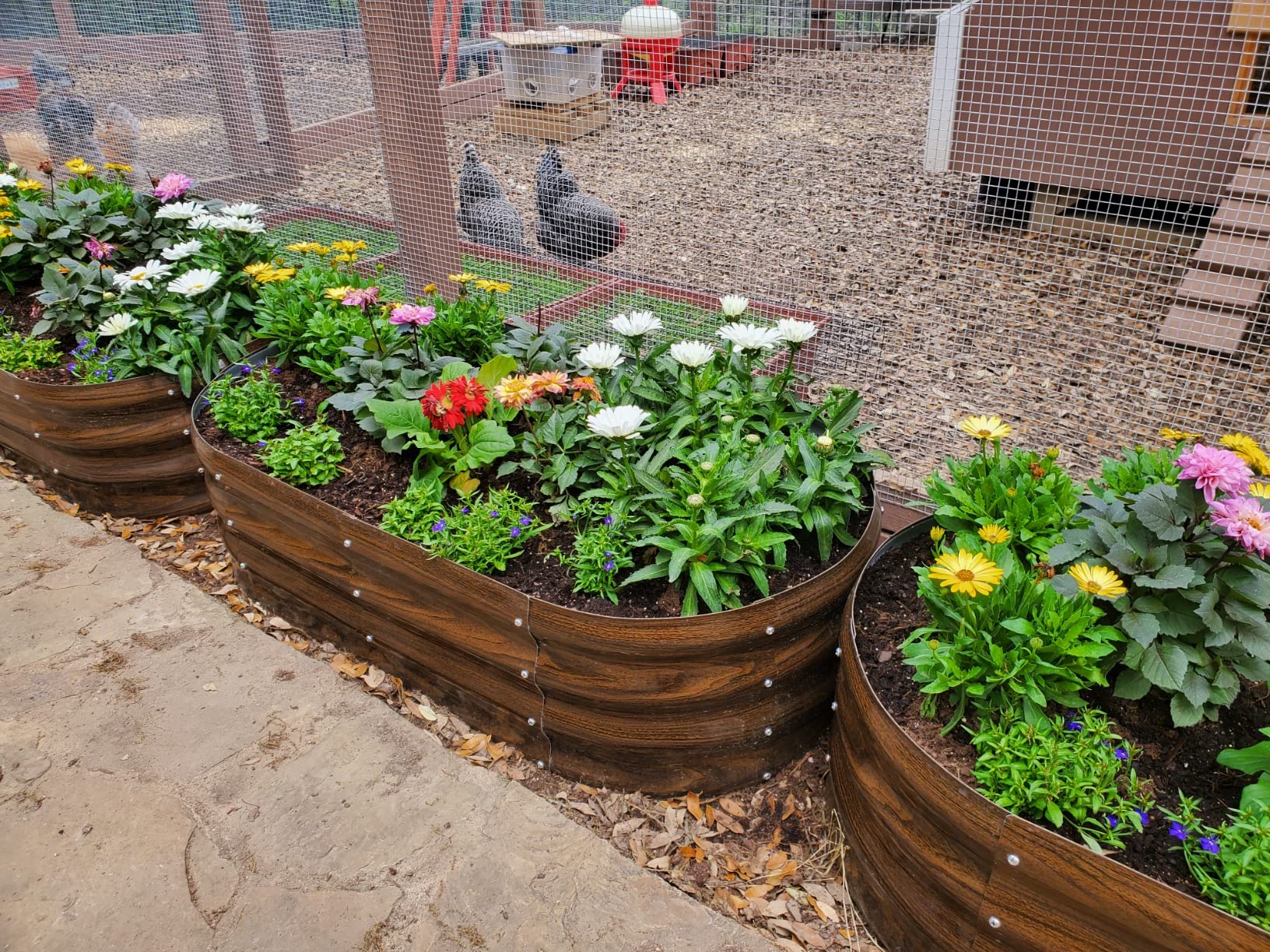
Raised garden beds are a game-changer for anyone looking to grow their own plants. They let you skip the hassle of dealing with poor soil by starting fresh with healthy, nutrient-rich soil. Plus, they warm up faster than in-ground soil, giving you a head start on the growing season.
You’ll also love how accessible they are. Whether you’re using a wheelchair or just want to avoid bending over, raised beds make gardening easier on your body. Their height can even double as extra seating while you work.
Growing food in a raised garden bed adds a layer of protection against pests like slugs and rabbits. The height and frame act as a natural barrier, keeping your plants safer.
If you’re new to gardening, raised bed gardening for beginners is a fantastic way to start. It’s simple, productive, and perfect for creating a thriving garden space.
Key Takeaways
Raised garden beds make soil better. You can mix nutrients to help plants grow strong.
They are easier to use. Raised beds lower body strain, so anyone can garden easily.
They drain water well. Raised beds stop soggy soil, which keeps roots healthy and avoids mold.
They help with pests and weeds. The height blocks pests and reduces weeds.
Taking care of them is important. Check soil moisture, add compost, and watch for pests to keep plants healthy.
Benefits of Raised Garden Beds
Improved Soil Quality and Structure
One of the biggest perks of raised garden beds is the ability to control your soil. Unlike traditional garden soil, which often lacks nutrients, you can create a nutrient-rich mix for your raised bed garden. By combining mineral soils with compost, you’ll improve aeration and boost nutrient retention. This means your plants will have everything they need to thrive.
Raised garden beds also maintain their structure over time. The soil doesn’t compact as much as it does in in-ground gardens, which keeps it loose and easy for roots to grow. Plus, the added compost helps with moisture management, so your plants get just the right amount of water. Healthy soil equals healthy plants, and that’s a win for any gardener!
Better Drainage and Root Health
If you’ve ever dealt with soggy soil, you know how frustrating it can be. Raised garden beds solve this problem by offering excellent drainage. The elevation allows water to flow out quickly, reducing the risk of mold, mildew, and root rot. This is especially helpful if you live in a wet climate.
Wooden raised beds are particularly effective at promoting drainage. They keep the soil from becoming waterlogged, which is crucial for root health. When roots have access to both air and water, they grow stronger and support healthier plants. With a raised bed garden, you’re setting your plants up for success from the ground up.
Accessibility and Reduced Strain
Gardening should be enjoyable, not a chore. Raised garden beds make it easier for everyone to get involved, especially if you have physical limitations. Their height eliminates the need to bend or kneel, which can save your back and knees from strain.
For those with mobility challenges, raised beds offer easy access. You can tend to your plants while sitting or even from a wheelchair. This makes raised bed gardening an inclusive and comfortable option for gardeners of all abilities. Plus, the convenience of having everything within reach means less time spent on maintenance and more time enjoying your garden.
Maximized Growing Space
If you’re working with a small yard or even a balcony, raised bed gardening can help you make the most of your space. These beds are perfect for maximizing every inch of your garden, especially in urban areas where space is tight.
You can get creative with vertical gardening techniques to grow more plants without needing extra ground space. For example:
Use trellises or fences to grow climbing plants like beans, cucumbers, or even flowers.
Try multi-tiered planters to create a mini herb garden on your balcony.
Stackable or modular designs let you expand your garden upward instead of outward.
Raised garden beds also work well with unconventional materials. You can repurpose items like horse troughs or whiskey barrels to create unique and functional garden spaces. These options not only save space but also add character to your garden.
The structured layout of raised beds allows for better plant organization. You can group plants with similar needs together, ensuring they thrive. Plus, the defined borders make it easier to manage your garden, keeping everything neat and efficient. With a raised bed garden, you’ll be amazed at how much you can grow, even in the smallest spaces.
Pest and Weed Control Benefits
One of the best benefits of raised bed gardening is how it helps you keep pests and weeds under control. Raised garden beds act as a natural barrier, making it harder for pests like gophers and moles to reach your plants. You can even add a mesh or hardware cloth at the bottom of the bed for extra protection.
Weeds are less of a headache too. Since you’re starting with fresh, weed-free soil, you’ll notice far fewer weeds compared to traditional gardens. The tall borders of raised beds also prevent weeds from creeping in from nearby pathways.
Want to keep slugs, rabbits, or birds away? Raised beds make it easy to add physical barriers like floating row covers or netting. These simple additions can save your plants from becoming a snack for unwanted visitors.
By reducing pests and weeds, you’ll spend less time on maintenance and more time enjoying the benefits of raised bed gardening. It’s a win-win for you and your plants!
How to Build a Raised Garden Bed
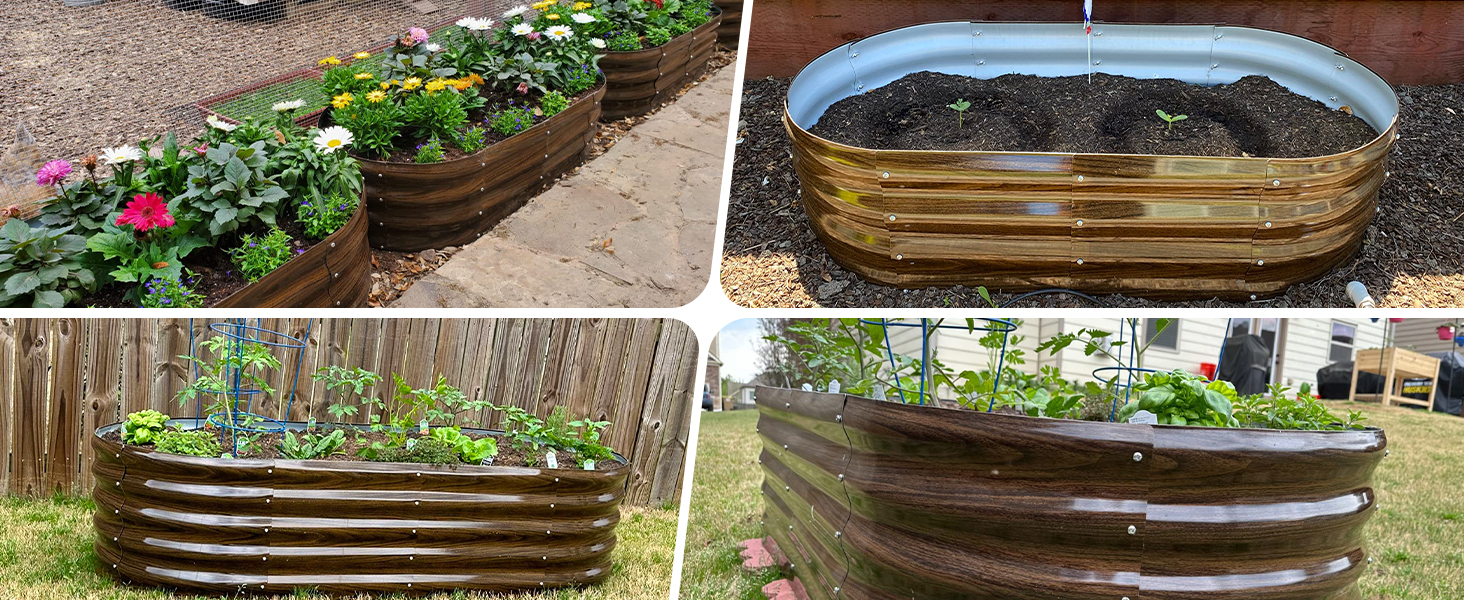
Choosing the Right Location
The first step in building a raised garden bed is picking the perfect spot. You want a location that sets your plants up for success. Here’s what to look for:
Sunlight exposure: Choose a sunny spot, ideally on the south side of tall structures, to maximize light. This is especially important during winter.
Water proximity: Keep your garden close to a water source. This makes watering easier and saves you time.
Convenience: Position your bed near your kitchen. This makes harvesting fresh veggies or herbs a breeze.
Aesthetics: Make sure the garden blends well with your yard or landscape. A visually pleasing setup can enhance your outdoor space.
By taking these factors into account, you’ll create a raised bed garden that’s both functional and beautiful.
Selecting Materials for the Frame
When it comes to the frame, you’ve got options. The material you choose affects durability, cost, and appearance. Let’s explore two popular choices:
Wood Options
Wood is a classic choice for raised garden beds. It’s natural, easy to work with, and gives your garden a rustic charm. Cedar and redwood are great options because they resist rot and insects. However, untreated wood is better for organic gardening since it avoids chemicals. Keep in mind that wood requires maintenance and may not last as long as other materials.
Modular Metal Raised Garden Beds (e.g., Snugniture)
Metal frames, like Snugniture’s Modular Metal Raised Garden Beds, offer durability and a sleek, modern look. These beds resist rot and pests, making them a long-lasting option. They also absorb and retain heat, which can benefit plants in cooler climates. Snugniture’s modular design lets you customize the layout to fit your space. Plus, their eco-friendly materials and commitment to sustainability make them a smart choice for environmentally conscious gardeners.
Material |
Advantages |
Disadvantages |
|---|---|---|
Metal |
- Absorbs and retains heat, beneficial in colder climates.
- Aesthetically pleasing with a modern look.
- Customizable in size and shape. | - Higher initial cost.
- Can overheat in hot climates.
- Potential for sharp edges.
- May rust over time.
- Lacks insulation compared to wood. |
| Wood | - Natural and rustic appearance.
- Easily customizable for various garden shapes.
- Better drainage than plastic or metal.
- Will not rust.
- Provides insulation against temperature extremes. | - Requires high maintenance to prevent rotting.
- Environmental concerns with treated wood.
- Limited lifespan compared to metal. |
Determining the Ideal Size and Depth
The size and depth of your raised bed depend on your needs and available space. Here’s how to determine the best dimensions:
Width: Keep the width under 4 feet so you can reach the center from either side. For wheelchair access, stick to 2-3 feet.
Height: A height of 10-36 inches works well. Taller beds reduce bending and are great for those with mobility issues.
Length: Aim for 10-12 feet to avoid structural problems. Using 8-foot boards can also save money.
Dimension Type |
Recommended Width (feet) |
Recommended Height (inches) |
|---|---|---|
General Access |
3 (children), 4 (adults) |
36 (for bending issues) |
Wheelchair Access |
2 (children), 3 (adults) |
24 |
Minimum Soil Depth |
N/A |
10 |
When you determine the size of your bed, think about the plants you’ll grow. Larger beds work well for veggies, while smaller ones are perfect for herbs or flowers.
Preparing the Ground for Installation
Before you start building your raised garden bed, take a moment to prepare the ground. This step ensures a solid foundation and helps prevent weeds from invading your garden. Here’s how you can do it:
Lay down a layer of cardboard or newspaper to act as a weed barrier. These materials will decompose over time, enriching the soil.
Add landscape fabric on top to block weeds while still allowing water to drain through.
Avoid placing rocks at the bottom. Contrary to popular belief, they don’t improve drainage and can actually hinder root growth.
Scatter sticks or small branches across the ground. These will improve aeration and drainage while slowly composting to benefit your plants.
By following these steps, you’ll create a clean, well-prepared base for your raised bed garden.
Assembling the Raised Garden Bed
Now it’s time to put your raised garden bed together. Don’t worry—it’s easier than it sounds! Here’s a step-by-step guide to help you build a raised bed:
Start with the shorter ends of the frame. Lay out two 4×4” corner pieces on a flat surface and position them apart to match the length of the short boards.
Place the short boards on top, ensuring their ends align with the outer edges of the corner pieces.
Use decking screws to attach the short boards to the corner pieces.
Repeat the process for the second short side.
Stand the shorter ends upright and connect them with the long boards. Set the long boards on top and secure them with screws.
With these simple steps, your DIY raised bed will be ready in no time.
Filling the Bed with Soil
Once your frame is assembled, it’s time to fill it with soil. Knowing how to fill a raised bed properly is key to healthy plant growth.
Layering for Optimal Soil Health
Start by layering materials to create a nutrient-rich environment:
Begin with coarse organic matter like sticks or straw at the bottom. This improves drainage and aeration.
Add a layer of well-rotted manure or aged compost. These provide essential nutrients for your plants.
Top it off with a mix of raised bed soil and organic compost. This combination ensures your plants have the perfect growing medium.
Recommended Soil Mixes for Raised Bed Gardening
For the best results, use a mix that includes:
Organic compost for nutrients.
Well-rotted manure to enrich the soil.
Aged compost to improve texture and water retention.
This mix will give your plants everything they need to thrive in your raised bed garden.
Essential Tips for Success
Choosing the Right Soil for Your Raised Bed Garden
The foundation of a thriving raised bed garden is high-quality soil. Choosing the right mix ensures your plants get the nutrients they need while maintaining proper drainage. Here’s how you can identify and create the perfect soil:
Combine topsoil or native soil with compost, worm castings, and a small amount of sand or vermiculite. This mix improves drainage and aeration.
Regularly amend your soil with compost and worm castings to keep it nutrient-rich.
Look for soil that’s loose and crumbly. It should allow water and air to reach plant roots easily.
Use a balanced mix of clay, silt, sand, and organic matter. Each component plays a role in supporting healthy plant growth.
By focusing on soil quality, you’ll set your plants up for success. Healthy soil means healthier plants and a more productive garden.
Watering Techniques for Raised Garden Beds
Watering your raised bed garden correctly is essential for plant health. Let’s explore how to water a raised bed effectively and keep moisture levels consistent.
How Often to Water
Consistency is key when it comes to watering. Water deeply but less frequently to encourage strong root growth. Early morning is the best time to water, as it reduces evaporation and gives plants time to absorb moisture before the heat of the day. During hot weather, you may need to water daily, but always check the soil first.
Retaining Moisture Effectively
Keeping your raised bed soil moist doesn’t have to be a challenge. Here are some tips to help:
Use a well-draining soil mix and add organic mulch on top. Mulch helps retain moisture and keeps the soil cool.
Install drip irrigation or soaker hoses for even moisture distribution. These systems are more efficient than overhead watering.
Monitor soil moisture regularly. Adjust your watering schedule based on plant needs and seasonal changes.
By mastering these techniques, you’ll spend less time worrying about watering and more time enjoying your garden.
Managing Pests and Diseases
Pests and diseases can be a headache, but with the right strategies, you can protect your plants naturally.
Natural Pest Control Methods
Skip the chemicals and try these eco-friendly pest control methods:
Companion planting is a game-changer. Pairing certain plants together can repel pests and attract beneficial insects. For example, marigolds deter aphids, while basil keeps mosquitoes away.
Use physical barriers like garden mesh fabric to keep pests out while allowing sunlight and water in.
Prune damaged leaves and stems to stop pests from spreading. Regularly tending your raised bed helps you catch problems early.
These methods not only protect your plants but also promote a healthier garden ecosystem.
Preventing Common Plant Diseases
Preventing diseases in your raised bed garden starts with good practices:
Avoid overwatering to prevent soggy soil, which can lead to root rot.
Prune plants to improve air circulation and reduce humidity.
Disinfect your tools after use to stop the spread of pathogens.
Rotate crops every few years to prevent disease buildup in the soil.
Healthy plants are less likely to get sick. By staying proactive, you’ll keep your garden thriving and disease-free.
Fertilizing and Nutrient Management
Fertilizing your raised bed garden is essential for keeping your plants healthy and productive. The right nutrients ensure your plants grow strong and yield a bountiful harvest. But how do you choose the best fertilizers and manage nutrients effectively? Let’s break it down.
Start with organic fertilizers like compost, manure, or bone meal. These improve soil structure and release nutrients slowly over time. They’re perfect for creating a long-lasting, nutrient-rich environment. If your plants need a quick boost, synthetic fertilizers can help. These are made from chemical compounds and provide an immediate supply of nutrients to address deficiencies.
You can also choose between granular and liquid fertilizers. Granular fertilizers are applied directly to the soil and release nutrients gradually, making them ideal for pre-planting or side-dressing. Liquid fertilizers, on the other hand, are diluted in water and applied to the soil or sprayed on leaves. They work fast and are great for fixing nutrient deficiencies during the growing season.
Adjust your fertilization routine based on the season. In spring, focus on enriching the soil with organic matter to prepare for planting. During the growing season, monitor your plants and add nutrients as needed. As fall approaches, reduce fertilization to let your plants wind down naturally. This seasonal approach ensures your raised bed garden stays productive year-round.
Tip: Always test your soil before adding fertilizers. This helps you avoid over-fertilizing, which can harm your plants and the environment.
Seasonal Maintenance for Raised Bed Gardening
Tending your raised bed throughout the year keeps it thriving and ready for every season. A little seasonal care goes a long way in maintaining healthy soil and productive plants.
In winter, protect your raised beds by covering them with mulch or straw. This insulates the soil and prevents it from freezing. For perennials or overwintering plants, add frost blankets or extra mulch to shield them from harsh weather.
As spring arrives, it’s time to prepare for planting. Check your gardening tools, research new plants, and improve soil health by adding compost or organic matter. Spring is also a great time to plan your garden layout and ensure your raised bed is ready for the growing season.
During summer, monitor soil moisture levels closely. Knowing how to water a raised bed properly is crucial. Water deeply and consistently to keep your plants hydrated, especially during hot weather. Adding mulch can help retain moisture and reduce evaporation.
In fall, focus on cleaning up your garden. Remove dead plants, add compost to replenish nutrients, and prepare the soil for winter. This sets the stage for a successful growing season next year.
Note: Regular maintenance not only keeps your garden productive but also makes tending your raised bed easier in the long run.
Common Mistakes to Avoid
Overwatering or Underwatering
Watering your raised garden bed might seem simple, but it’s easy to get it wrong. Overwatering can drown your plants, leading to root rot and a lack of oxygen. You might notice stunted growth, yellowing leaves, or even leaf scorch. On the other hand, underwatering deprives plants of the moisture they need to thrive, causing wilting and poor growth.
To avoid these issues, follow these tips:
Water deeply to encourage roots to grow deeper into the soil.
Use water-saving tools like drip emitters or soaker hoses for consistent moisture.
Add mulch to retain moisture and improve drainage.
Check the soil before watering. A soil probe can help you assess moisture levels accurately.
Match your plants to the water needs of your garden.
By watering wisely, you’ll keep your plants healthy and happy.
Using Poor-Quality Soil
The soil in your raised garden bed is the foundation of your plants’ success. Poor-quality soil can lead to weak plants, nutrient deficiencies, and reduced productivity. Organic materials without mineral content might seem like a good idea, but they can leave your plants starving for nutrients.
Here’s how to ensure your soil is top-notch:
Regularly amend your soil with compost and worm castings to maintain its quality.
Test your soil to identify any deficiencies and address them with the right amendments.
Healthy soil means healthier plants and a more productive garden.
Overcrowding Plants in a Raised Garden Bed
It’s tempting to pack as many plants as possible into your raised bed, but overcrowding can cause problems. Plants need space to grow, and when they’re too close, they compete for sunlight, water, and nutrients. This can lead to stunted growth and increased risk of disease.
Follow these spacing guidelines to prevent overcrowding:
Vegetable |
|
|---|---|
Arugula |
4-6 in |
Broccoli |
15-18 in |
Cabbage |
15-18 in |
Beans, bush |
3-4 in |
Beets |
3 in |
Tomatoes |
24-36 in |
Give your plants the room they need to thrive. Proper spacing ensures better airflow, healthier growth, and a more productive garden.
Ignoring Sunlight Requirements
Sunlight is like fuel for your plants. Without enough of it, they can’t grow strong or produce a good harvest. Ignoring sunlight requirements is one of the most common mistakes gardeners make. You might think your plants will adapt to whatever light they get, but that’s not always true. Each plant has specific needs, and understanding them is key to a thriving garden.
Here’s a quick guide to sunlight requirements for common plants:
Sunlight Requirement |
Description |
|---|---|
Optimum sun |
7 to 8 hours |
Sun |
At least 6 hours of direct sun |
Part-shade |
4 to 6 hours of direct sun |
Shade |
Less than 4 hours of direct sun |
To make the most of your garden’s sunlight, try these tips:
Place taller plants on the north side of your bed. This prevents them from shading shorter plants.
Use trellises for climbing plants like beans or cucumbers. They’ll get better sun exposure and save space.
Add reflective surfaces, like mirrors or white-painted boards, to bounce extra light into your garden.
If your garden gets too much sun, use shade cloth to protect plants from overheating.
By paying attention to sunlight, you’ll give your plants the energy they need to thrive. A little planning goes a long way in creating a productive and healthy garden.
Neglecting Regular Maintenance
Gardens don’t take care of themselves. Neglecting regular maintenance can quickly turn your raised bed into a mess of weeds, pests, and struggling plants. The good news? A little effort each week can keep your garden in top shape.
Start by weeding regularly. Weeds compete with your plants for nutrients, water, and sunlight. Pull them out as soon as you see them. It’s easier to manage weeds when they’re small.
Next, check your plants for signs of pests or diseases. Look for holes in leaves, discoloration, or unusual spots. Catching problems early makes them easier to fix. Prune damaged leaves and stems to keep your plants healthy and encourage new growth.
Watering is another task you can’t skip. Even with mulch or drip irrigation, you’ll need to monitor soil moisture. Adjust your watering schedule based on the weather and your plants’ needs.
Finally, don’t forget to feed your plants. Add compost or organic fertilizer every few weeks to replenish nutrients. Healthy soil leads to healthy plants, and healthy plants mean a bountiful harvest.
By staying on top of these tasks, you’ll enjoy a thriving garden with less stress. Think of maintenance as quality time with your plants—it’s worth it!
What to Plant and Layout Ideas
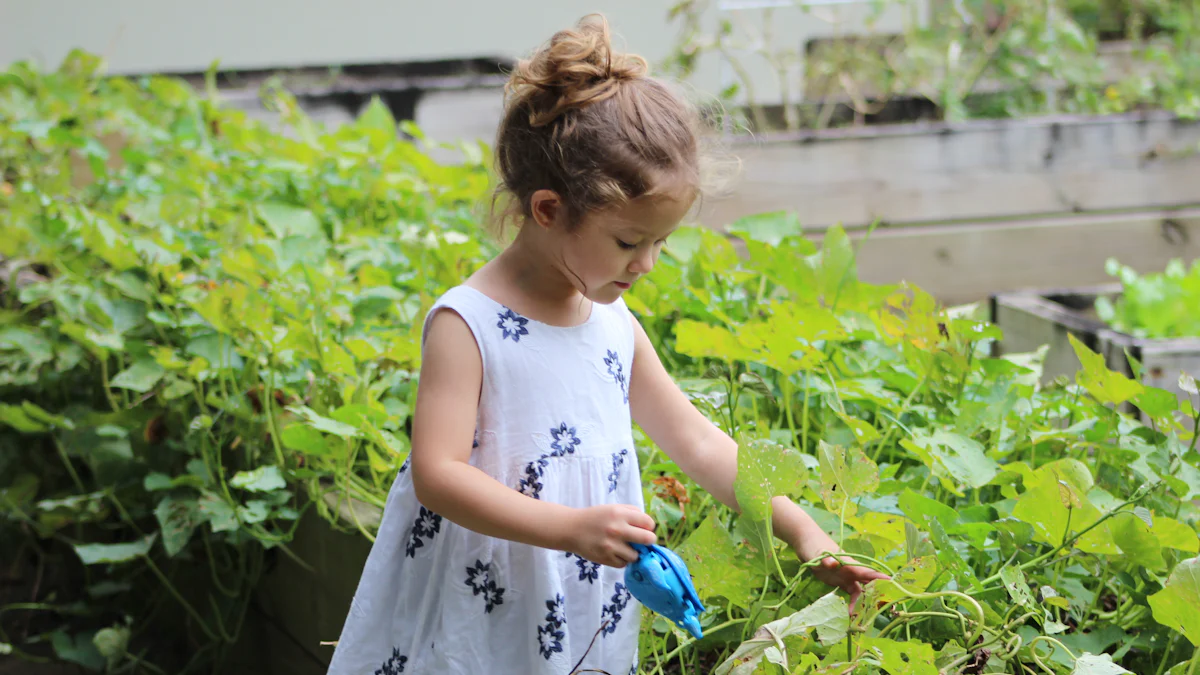
Best Plants for Raised Garden Beds
Vegetables for a Kitchen Garden
Growing vegetables in your raised bed garden is a fantastic way to enjoy fresh, homegrown produce. Some of the best options include tomatoes, lettuce, carrots, and radishes. These veggies thrive in the nutrient-rich, well-draining soil of a raised garden bed.
'These plants have shallow root systems that can easily grow in the limited space of a raised bed,' says Spoonemore. 'They also tend to have high nutrient demands and benefit from the rich, well-draining soil that a raised bed provides.'
Start with easy-to-grow vegetables like leafy greens or bush beans. They’re perfect for beginners and provide quick results for your kitchen garden.
Herbs for Everyday Use
Herbs are a must-have for any kitchen garden. Basil, parsley, cilantro, and thyme grow beautifully in raised beds. Their compact size makes them ideal for planting in raised beds, and you’ll love having fresh herbs just steps away from your kitchen.
Flowers for Aesthetic Appeal
Don’t forget to add flowers to your raised bed garden! Marigolds, zinnias, and nasturtiums not only brighten your garden but also attract pollinators like bees and butterflies. Plus, some flowers, like marigolds, can help repel pests naturally.
Companion Planting Strategies for Raised Bed Gardening
Companion planting is a smart way to boost your garden’s productivity and health. By pairing certain plants together, you can create a thriving ecosystem in your raised bed garden.
Here’s how companion planting helps:
Attracts beneficial insects for better pollination.
Lures pests away from your main plants.
Repels pests naturally with plant substances.
Enriches the soil with essential nutrients.
Try these pairings for your raised bed garden:
Lettuces and peas: Peas provide shade for lettuce, extending its harvest.
Broccoli and salad greens: Broccoli shades greens, helping them thrive in warmer weather.
Creative Layout Ideas for Raised Bed Gardens
Square Foot Gardening
Square foot gardening is a great way to maximize space in your raised garden bed. Divide your bed into square-foot sections and plant different crops in each one. This method keeps your garden organized and ensures every inch of space is used efficiently.
Vertical Gardening Additions
Vertical gardening takes your raised bed garden to the next level—literally! Use trellises, stakes, or chicken wire to grow climbing plants like beans or cucumbers. You can also attach shelves to fences or create triangular-shaped vertical beds with pallets. These ideas save space and add visual interest to your garden.
The garden trio layout is another creative option. Group your raised beds in odd-numbered clusters for a natural look. Add trellises to enhance vertical space and create inviting pathways through your garden.
Raised garden beds offer so many advantages that make gardening easier and more enjoyable. You’ll deal with fewer weeds, skip the hassle of tilling, and have better control over your soil’s health. Plus, planting in raised beds gives you easy access to your garden, making it perfect for anyone with mobility challenges. These beds also extend your growing season, letting you grow your own food earlier in spring and later into fall.
Starting your own raised bed garden is simpler than you think. With a little effort, you can create a space that’s productive, beautiful, and rewarding. Experiment with different plants and layouts to find what works best for you. Successful raised bed gardening is all about trying new things and enjoying the process. So, why wait? Dive into easy raised bed gardening today and watch your garden thrive!



